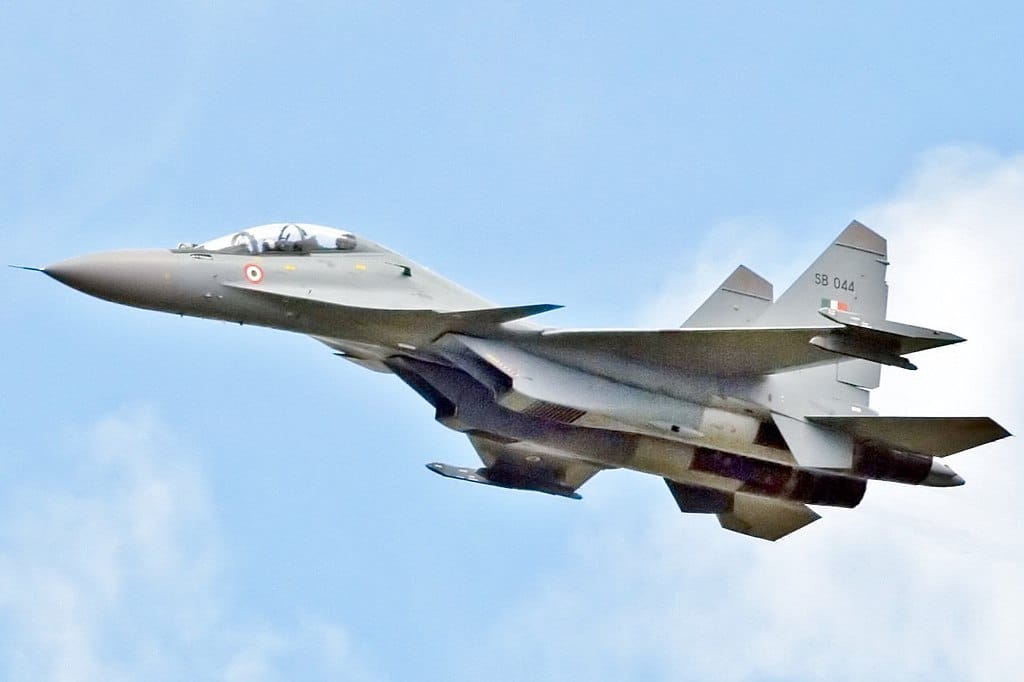Aerospace
HAL Plans Batch Upgrades for Sukhoi-30MKI Fleet

Hindustan Aeronautics Limited (HAL), India’s state-owned aerospace and military firm, is planning a significant modernization programme to improve the capabilities of the Indian Air Force’s (IAF) Sukhoi-30MKI aircraft fleet. This massive project, which is set to begin in fiscal year 2026-27.
The cockpit of the Sukhoi-30MKI has been completely redesigned as the main point of this upgrade effort. In a state-of-the-art makeover, new-generation touch widescreen checks will replace the present cockpit displays. This improvement is expected to improve pilot situational awareness, data visualization, and control over the aircraft’s systems, leading to a more responsive and accessible interface.
Delta to serve Mumbai nonstop from the U.S. in 2019(Opens in a new browser tab)
The addition of a new Active Electronically Scanned Array (AESA) radar system produced locally for the programme is critical to the upgrade plan. In electronic warfare settings, this radar technology is critical for improving targeting precision and performance. It improves the Sukhoi-30MKI’s ability to operate effectively in difficult operational conditions by improving detection and tracking capabilities.
Along with the radar update, the mission control computer—a crucial part of the aircraft’s avionics suite—will also see significant advancements. Given the updated Sukhoi-30MKI’s powerful radar system and new display infrastructure, these improvements are crucial to guaranteeing seamless integration and top performance.
Additionally, the modernization programme anticipates an improved arsenal of weaponry that may include advanced electronic defenses and ammunition. A powerful asset in both air-to-air and air-to-ground operations, this improvement will considerably increase the aircraft’s combat effectiveness.
Air India Plans To Lease 3 Boeing 777-300Er From Singapore Airlines(Opens in a new browser tab)
The modernization project planned by Hindustan Aeronautics Limited (HAL) represents a significant stride in India’s quest for enhanced air combat capabilities and technological self-reliance. With the comprehensive redesign of the Sukhoi-30MKI aircraft fleet, encompassing cutting-edge cockpit displays, an indigenous AESA radar system, and an upgraded mission control computer, the Indian Air Force is on track to secure a formidable edge in contemporary aerial warfare.
This strategic initiative not only strengthens the Sukhoi-30MKI’s capabilities but also underscores India’s commitment to innovation and defense technology development.
In the pursuit of its ambitious upgrade plan, HAL, Hindustan Aeronautics Limited, places a pivotal emphasis on successfully securing the much-needed approvals and financial sanctions from both the Ministry of Defence (MoD) and the Indian Air Force (IAF).
This visionary project, if granted the necessary green light, is set to unfold over the course of multiple years, signifying a long-term commitment and dedication to a transformative goal. The overarching objective is nothing short of remarkable: to meticulously convert the entire existing fleet of Sukhoi-30MKI aircraft into the cutting-edge Super-30 variant, with the ambitious deadline set for the year 2034. The meticulous execution of this grand undertaking will proceed at a steady and methodical pace, with an annual target of transforming 20 to 25 aircraft.

Aerospace
Boeing Transfers Rocket Stage to NASA, Paving Way for Human Moon Mission

Boeing has achieved a significant milestone by providing NASA with the second core stage of the Space Launch System (SLS) rocket.
This crucial component, crafted at NASA’s Michoud Assembly Facility (MAF), is set to propel the Artemis II crew into lunar orbit, marking humanity’s return to deep space after a 50-year hiatus.
The monumental Boeing-built rocket stage, the largest element of the Artemis II mission, will embark on a journey aboard the Pegasus barge, traveling 900 miles to NASA’s Kennedy Space Center.
Comparison of two legendary aircraft B777x vs B747 aircraft:Click here
Upon arrival, it will be meticulously integrated with other essential Artemis II components, including the upper stage, solid rocket boosters, and NASA’s Orion spacecraft within the iconic Vehicle Assembly Building. This intricate integration process is a vital step toward the eagerly anticipated Artemis II launch, slated for 2025.
“Boeing-built products helped land humankind on the moon in 1969, and we’re proud to continue that legacy through the Artemis generation,” remarked Dave Dutcher, vice president and program manager for Boeing’s SLS program. “Together, with NASA and our industry partners and suppliers, we are building the world’s most capable rocket and paving the way to deep space through America’s rocket factory in New Orleans.”
NASA, Lockheed Martin Reveal X-59 Quiet Supersonic Aircraft:Click here
The delivery of Core Stage 2 marks a significant achievement in the evolution of the SLS rocket. Towering over 200 feet and powered by four RS-25 engines, this core stage, coupled with two solid-fueled booster rockets, will generate a staggering 8.8 million pounds of thrust. This immense power is crucial to launching Artemis II and future missions into the vast expanse of space.
The SLS rocket stands unparalleled in its capability to transport both crew and substantial cargo to the moon and beyond in a single launch. Its extraordinary capacity will facilitate the delivery of human-rated spacecraft, habitats, and scientific missions to destinations including the moon and Mars, ushering in a new era of space exploration.
-

 Travel1 week ago
Travel1 week agoAir India to Expand US Operations with Three New Routes After a Decade
-

 Travel2 weeks ago
Travel2 weeks agoWhy We Should Avoid These Stamps in a Passport
-

 Airlines1 month ago
Airlines1 month agoInvestigations Reveal Fake Chinese Titanium in Boeing and Airbus Jets
-

 Tech4 weeks ago
Tech4 weeks agoChina’s CATL Plans 1,800-Mile Electric Plane Launch by 2027
-

 Airport3 days ago
Airport3 days agoTop 10 Largest Airports in the World by Size
-

 Aerospace4 weeks ago
Aerospace4 weeks agoChina’s Fighter Jets Turn Wings into Autonomous Drones
-

 Airlines4 days ago
Airlines4 days agoAir India Rolls Out A350s for Delhi-New York JFK and Newark Routes
-

 Defence3 weeks ago
Defence3 weeks agoBoeing Enhances Chinook with New Engines and Block II Upgrades at $96 Million







